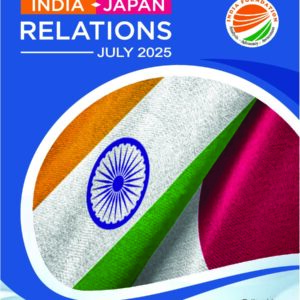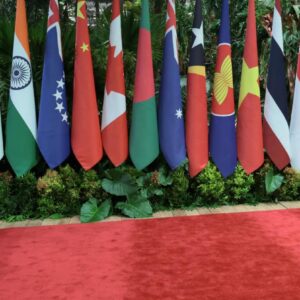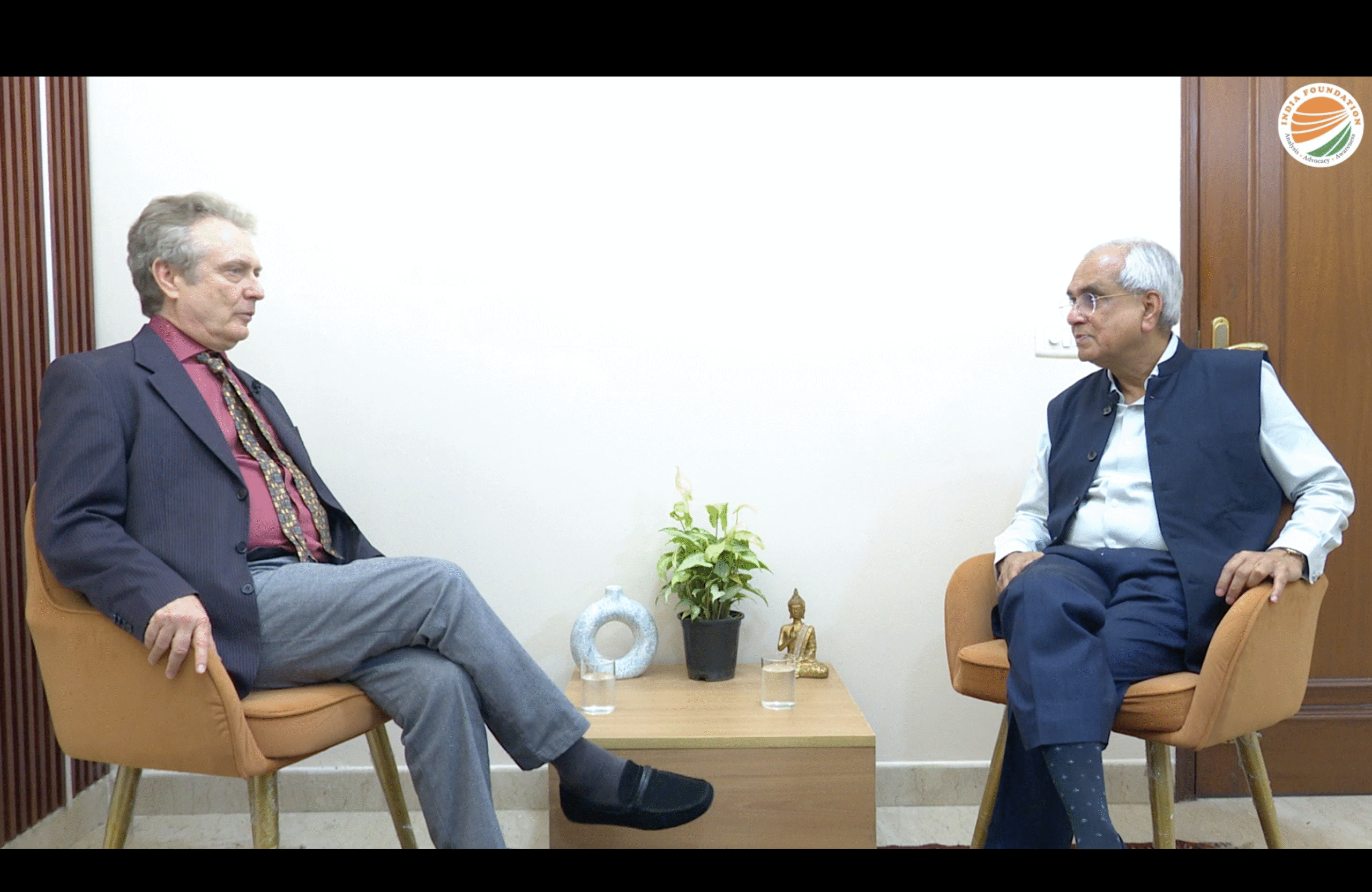The 21st century has witnessed many events, from the emergence of new and formidable powers to the COVID-19 pandemic and the rise of new economies to the shift in the global order. The hallmark of this century is that it has slowly yet steadily kept in check the unilateral and self-proclaimed American ambition of global domination. For far too long, America considered its problems to be the concern of the entire world and its priorities to be for the welfare of the very Utopian world it envisioned. However, the 21st century gave rise to several international platforms of cooperation that kept this Utopian idea in check, one such international forum being BRICS+, encompassing some of the biggest powers and economies of the world today. Originally founded with four members, it has expanded geographically and economically beyond measure in a short time and is now aiming to navigate against the high tide of the dollar-centric world amidst the shifting power dynamics across the globe.
For far too long, the dollarised world, the World Bank, and the IMF virtually controlled trade, commerce, and lending and caused a noticeable disadvantage to developing nations by depriving them of much-needed aid for their development and growth. This phenomenon gradually resulted in anguish against the status quo, naturally calling for an alternative. BRICS was founded to counter the Western-dominated financial system, which disadvantaged developing economies, and to create a forum to strengthen the voice of the rising economies on the global stage.
To fulfil this ambitious yet achievable objective, financial institutions like the New Development Bank (NDB) were set up under the aegis of BRICS in 2015 to serve as a multinational bank aimed at mobilising resources for infrastructure and sustainable development projects in emerging markets and developing countries (EMDCs). The NDB was envisioned to provide an alternative to the IMF and the World Bank, which were virtually controlled by Western powers and often neglected developing economies or placed unreasonable conditions in exchange for aid or monetary support. The aim of this new multinational bank, backed by strong economies and emerging powers, was to fundamentally finance projects and innovate solutions to help build a more inclusive, resilient, and sustainable future by playing the role of a catalyst and bridging the gap between the availability of resources and the growing needs of the founding members and the EMDCs. The core focus areas of the NDB are:
- Clean Energy and Energy Efficiency. Leveraging proven and emerging transformative technologies, it aims at projects that deploy clean and renewable energy at scale and enhance the efficiency of power transmission, distribution, and storage. In line with its commitment to sustainability and climate goals, the NDB does not consider financing any new coal-fired capacity for power generation.
- Transport Infrastructure. A sustainable, reliable transport infrastructure fosters economic growth, unlocks job opportunities, and improves lives. The NDB supports the development of inter-city and intra-city transport networks and infrastructure that promote regional connectivity and facilitate the movement of people, goods, and services. With a focus on sustainable infrastructure, special attention is paid to safety features and socially inclusive amenities during project preparation and implementation. The NDB also prioritises smart transport and logistics projects that use technology to improve efficiency and reduce GHG emissions.
- Environmental Protection. The NDB recognises that sustainable development involves decoupling economic growth from environmental degradation and pollution. It supports projects that conserve and restore key ecosystems, promotes nature-based solutions and better management of natural resources, contributes to pollution prevention and abatement, and aims to reverse or reduce the negative environmental impact of socioeconomic activities.
- Social Infrastructure. Social infrastructure has a value that goes beyond its economic benefits. The NDB supports the building and modernising of social infrastructure, such as schools, hospitals, affordable housing, cultural heritage sites, and other long-term physical assets that facilitate social services, support human development, and improve quality of life and living standards.
- Digital Infrastructure. With the growing dependence on digital infrastructure and the massive need to bridge the gap between demand and availability, the NDB finances projects that empower the expansion and modernisation of national and international backbone digital infrastructure. Investing in these back-end digital infrastructure projects, particularly those extending connectivity to underserved areas, aims to support the efforts of member countries to achieve universal and affordable access.
Another important financial arrangement within BRICS is the Contingent Reserve Arrangement (CRA), signed in 2014 by member states as part of the Fortaleza Declaration at the Sixth BRICS Summit in response to the growing instances of global financial crises. The CRA was formally founded in 2015 at the Seventh BRICS Summit as a competitor to the IMF and presented the geopolitical idea of increasing South-South cooperation in the world order. The BRICS CRA proposes to provide short-term liquidity support to the members through currency swaps to help mitigate balance of payment (BOP) crises if such a situation arises.
The CRA also extends help to India and other signatory countries to forestall short-term liquidity pressures, provide mutual support, and further strengthen financial stability. It is a framework that aims to provide support through additional liquidity and other means to BRICS countries during economic crises. It also seeks to strengthen the global financial safety net and complement existing international arrangements (from the IMF) as an additional line of defence, if not wholly serve as an alternative in the future. With an initial combined contribution of $100 billion from member states, the CRA is a critical component of BRICS+ today and, from an Indian perspective, serves as an additional safety net and, from a Global South perspective, serves as a living testimony to growing South-South cooperation.
However, the financial institutions and arrangements at BRICS have consistently lagged behind those of the Western world, implicating a lack of effort and a clear vision within the forum. Many of these issues can also be attributed to internal fissures, disagreements within the forum over the years, and a lack of strong leadership to drive the bloc to greater heights. However, many of these issues have been addressed and subdued in the recent past with stronger leaders at the helm of affairs, such as Indian Prime Minister Narendra Modi, who remains bullish on the idea of BRICS+ countering undue Western domination in the sectors concerned and promoting cooperation, growth, and sustainable development within member countries and beyond, thus extending support to smaller and developing economies and broadening the base, resulting in more significant influence for the forum on the global stage.
For far too long, the institutions mentioned above have served as mere paper tigers. Well—framed structures and policies are in place, but due to a lack of effective implementation, they have not been able to counter Western influence in the domain. However, some recent notable developments will be discussed to shed light on the current scenario and the road ahead for BRICS+ and global society.
Alternative Payments System – The Ambition, the Struggle, and the Road Ahead
Calls for an alternative and independent payment system have been echoed for over a decade and have only strengthened with time. Given the US domination over trade and its unilateral use of sanction policies against BRICS+ members like Russia and China over the years, this cause has gained pace recently. One such call for an alternate system to de-dollarise the world was echoed by the Kremlin when Vladimir Putin called the sanction on Russia’s $300 billion reserve “theft.”
In its role as BRICS chair for 2024, Russia announced plans ahead of the Kazan Summit for the creation of an independent Cross-Border Payment Initiative (BCBPI) and the development of an alternative to SWIFT for use by BRICS’ expanding group of member states. The new payment messaging system was slated to provide genuine alternatives to the US dollar—which remains dominant in international trade—in favour of the bloc’s currencies. This would curtail the US’s economic influence and limit its ability to use the dollar “as a weapon,” in Putin’s words, against the bloc’s member states.
In the Kazan Declaration, BRICS nations agreed “to discuss and study the feasibility of establishing an independent cross-border settlement and depository infrastructure, BRICS Clear, an initiative to complement the existing financial market infrastructure,” with participation in the scheme being ” voluntary.”
The move towards an alternative international payments infrastructure comes amid a ratcheting up of de-dollarisation rhetoric, particularly by Russia and China. After being slapped with sanctions and locked out of SWIFT following its invasion of Ukraine, Russia has turned to the renminbi, regularly settling a third of its foreign trade by the end of 2023. The road ahead seems rocky at first glance, but sustained cooperation on this front may yield results soon.
The M-Bridge Project and BIS Exit
The ambitious M-Bridge Project was being carried out with the Bank for International Settlements (BIS) to provide an alternative to the Western-backed payments system and SWIFT. However, the recent exit of BIS from the BRICS-backed M-Bridge project and its launch of an independent blockchain-driven payments system hurt cooperation between the two. Nevertheless, this is still a step in line with the aims of the bloc—to counter SWIFT and Western influence in global finance. Regardless, the M-Bridge project is sure to change the global financial landscape.
The Need for an Alternative to SWIFT
Given the frequent misuse of sanctions and tariffs on economies by the United States of America, it may be sensible for the group to have a dollar-free, independent global payments system as an alternative to SWIFT. This would cater to the needs of BRICS+ member states and eventually transition into an alternative international system, offering better choices and preventing economic coercion. A concerted effort must be made to ensure this dream becomes reality through more robust cooperation across the BRICS+ group.
BRICS Currency
Earlier this year, the plan for a joint BRICS-led currency became a hot topic of discussion and debate within geopolitical circles. It was viewed as an attempt to de-dollarise global trade and encourage using a shared currency for exchanges between major economies. On the one hand, some considered it a tough road to navigate, while others saw it as the way forward, citing the growing power and influence of BRICS nations and the declining clout of the Western superpower.
In fact, towards the end of 2024, Vladimir Putin released a symbolic banknote in Kazan, signalling a plan to challenge the dollar and promote local currency trade. The banknote was seen as a symbol of increasing cooperation among member states and as a precursor to a potential joint currency. Additionally, the Indian Prime Minister indicated a push for financial integration among the BRICS members. However, Vladimir Putin clarified that BRICS was not aiming to create a new currency or replace the SWIFT system anytime soon. This duality in messaging caused some uproar and debate among various factions.
Geopolitics, however, is as volatile as helium and as fluid as water. Every minor change on the global stage demands a shift in approach. With the conclusion of the U.S. presidential elections and the reemergence of Donald Trump as President-elect, it was clear that many things would change globally, especially for countries like India. This situation would undoubtedly test India’s political astuteness and diplomatic wisdom.
Within weeks of the election results, Donald Trump announced that any attempt at de-dollarisation would face severe consequences. He threatened countries with 100% tariffs, with the U.S. again leveraging its economic sanctions and tariffs trump card. In a post on X, the President-elect remarked that any country supporting a currency aiming to challenge the dollar would have to “say goodbye” to America. This was a direct threat to BRICS+, the only major alliance that does not, and will never, include the U.S. Within hours of this statement, BRICS+ member states began to backtrack, clarifying that no efforts were being made to undermine the dollar.
In an interview, India’s External Affairs Minister, S. Jaishankar, stated that India has no interest in weakening the dollar and emphasised that there is no proposal for a BRICS currency. This response came shortly after Trump’s tariff threat and was seen as a counterbalance to his comments.
This effectively ends the ongoing debate about a BRICS+ joint currency, which now seems like little more than a paper tiger with little chance of becoming a reality in the near future.
Strengthening NDB
The New Development Bank (NDB) has been in the making for over a decade, with little substantial progress. It was founded to compete with the IMF and the World Bank and become an alternative lender and leader. The NDB’s expansion, in terms of reach and influence, is crucial for any true shift in global power dynamics.
Some priorities for the NDB include:
- Becoming a generous lender to developing economies and those struggling with economic crises. This aligns with a statement made by the President of Brazil last year: “The NDB must work to save developing economies, unlike the IMF, which contributes to sinking them.”
- Expanding its reach in terms of both sectors and geographic coverage.
- Envisioning and fostering greater cooperation among member states and ensuring they contribute generously to propel the NDB’s growth.
Local Currency Trade
One key goal in recent years has been to settle trade payments in local currencies, reducing reliance on foreign currencies. Member states within BRICS are already practising this; for example, over 90% of trade between India and Russia is now conducted in local currencies. This not only eases trade by eliminating foreign intermediaries but also promotes the use of local currencies in global trade.
While some work remains to make local currency trade a standard procedure among all member states, it would significantly strengthen the group’s financial position. Given the current circumstances, this seems more feasible than a joint currency.
The Indian Perspective
Since 2014, India’s global positioning has strengthened in every sense. Under Prime Minister Narendra Modi, the Indian government has worked to forge new ties while maintaining old relationships with key partners. India has emerged as a significant voice for the Global South while maintaining a strategic partnership with the USA. This diplomatic maturity will be crucial as India navigates relations with partners who are at odds—namely, the United States and Russia. Furthermore, India must leverage its influence to monitor China’s expansionist tactics.
As it stands, India does not support a joint BRICS+ currency or an alternative payment system to replace SWIFT. This was made clear at the Kazan summit, where it was emphasised that India has no interest in de-dollarisation but is committed to expanding the NDB and contributing to greater cooperation and consensus among BRICS+ members. However, in doing so, India will exercise caution to avoid upsetting the U.S., especially with Trump’s presidency on the horizon—a time that, if things progress favourably, could mark the peak of India-U.S. cooperation.
The Road Ahead
Overall, BRICS+ must focus on the following key aspects:
- Strengthening the NDB – to become a generous global lender and aid for the voiceless.
- Expanding BRICS+ membership – to create a larger and more influential forum with a significant global footprint.
- Enriching the CRA – enhancing the Contingent Reserve Arrangement.
- Promoting intra-BRICS trade, commerce, and investment.
- Creating dedicated BRICS special economic zones.
If these goals are achieved in a timely manner, the member states may then explore the possibility of a Unified Payment System to deepen cooperation and exchange without relying on external factors.
To conclude, BRICS, especially Russia, must remember the words of the 4th U.S. President, James Madison: “He who holds the purse, holds the power.”
Author Brief Bio:Mr. Nakshatra Jagannath, an alumnus of St. George’s College, Mussoorie, and St. Xavier’s College, Kolkata, has an impressive trajectory in the public policy domain. Before transitioning to a successful corporate career, he contributed to national and international think tanks, including the Council for Strategic Affairs, USA. He has authored over a dozen articles for newspapers, magazines, think tank reports, and media outlets on international strategic affairs. As a youth leader, Nakshatra was invited by the WYF Directorate, Federal Agency of Youth Affairs of the Russian Federation, to represent India at the World Youth Festival 2024 in Sochi. The conference hosted delegations from 180 countries, including heads of state from several nations. Nakshatra has led impactful social campaigns, including the Shaheed Shradhanjali plantation drive with ISKCON Vrindavan, which earned appreciation from the Chief of Defence Staff, Sectt. Featured in leading Indian newspaper, Nakshatra was also part of a Forbes India web series. Nakshatra aspires to contribute to the world of public policy and polity.
References:
New Development Bank. (2023, February 16). About NDB – New Development Bank. https://www.ndb.int/about-ndb/
Muhammad Zubair Ashraf, Wei Wei, Muhammad Usman, Shahid Mushtaq,How can natural resource dependence, environmental-related technologies and digital trade protect the environment: Redesigning SDGs policies for sustainable environment?, Resources Policy,Volume 88,2024,104456,ISSN 0301-4207,https://doi.org/10.1016/j.resourpol.2023.104456
Hawser, J. E. a. A. (2024, October 25). Explainer: Putin’s Swift rival a bridge too far for Brics. The Banker. https://www.thebanker.com/Explainer-Putin-s-Swift-rival-a-bridge-too-far-for-Brics-1729858688
Peter, V. a. P. B. A. (2024, October 29). HISTORIC MEETING OF BRICS NATIONS IN KAZAN, RUSSIA – UN Secretary General attends – A BRICS Clear Depository: Financial System Proposal announced at Kazan – [10-29-24]. The Burning Platform. https://www.theburningplatform.com/2024/10/29/historic-meeting-of-brics-nations-in-kazan-russia-un-secretary-general-attends-a-brics-clear-depository-financial-system-proposal-announced-at-kazan-10-29-24
Hamid, A. K. (2024, December 9). BRICS, Blockchain & Global South – Level up Coding. Medium. https://levelup.gitconnected.com/brics-blockchain-global-south-87e14105768e




